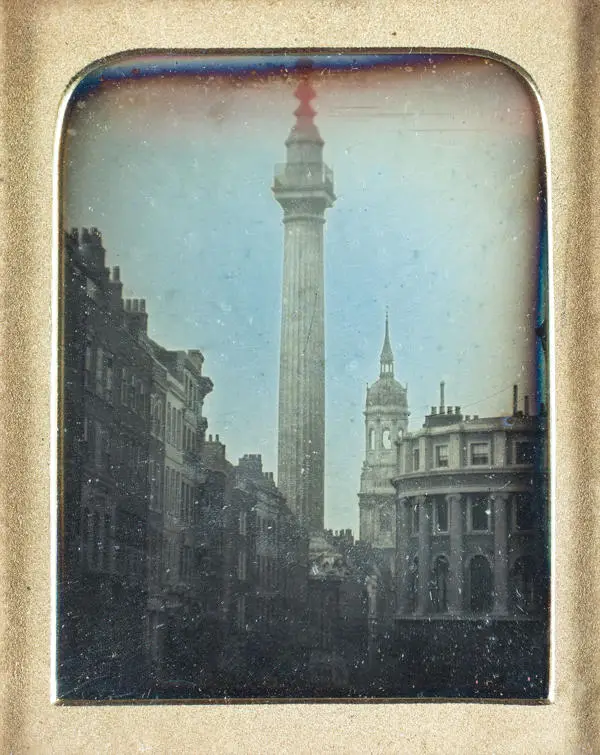The Monument
Introduction to London's Grand Designs
London is home to some of the world's most striking architecture and innovative engineering. Whether driven by divine purpose or the needs of a growing population, the grand designs of architects and engineers have shaped the identity of the city and the lives of Londoners.
This regular series of articles, based on a London Metropolitan Archives’ exhibition in Aldgate Square and then Guildhall Yard in 2019, delves into the historical collections at LMA to present drawings and photographs that record the development of some of London’s greatest buildings and structures. The projects cover a wide variety of aspects of life in the capital, from worship to entertainment, transport to housing, and all add to the story of the developing city. Many are still present today, but others have not survived the passage of time and exist only in memory and archives.
The Monument
The Monument was built to commemorate the Great Fire of 1666 which brought such devastation to the City of London. It remains a significant landmark today and a must see destination for tourists to the City. Sharon Tuff takes a closer look.

On the night of 2 September 1666, a fire broke out in Thomas Farriner's bakery in Pudding Lane and swiftly spread to neighbouring buildings. The fire continued to spread exacerbated by an east wind. It wasn't until 6 September that the fire was brought under control, but by then St Paul's Cathedral, the Royal Exchange, 43 livery halls, 87 of the City’s churches and 13,000 houses had been lost. Thousands of people lost their homes and an unknown number their lives.
Commissioned by the City of London Corporation and designed by Sir Christopher Wren and Robert Hooke, the Monument was constructed between 1671 and 1677. On top of the Doric column is a flaming urn of copper gilded with gold leaf to symbolise the Great Fire. The City of London continues to be responsible for the building to this day.
The Monument is 62 metres (202 feet) high and was built with a spiral staircase of 311 steps leading to a public viewing gallery at the top. The cost of construction was £13,450 11s and 9d. It originally held a prominent position at the north approach to London Bridge, the only bridge across the Thames at the time. However, with the opening of a new bridge in 1831, the Monument lost that prominence, although it remains a popular tourist attraction to this day.